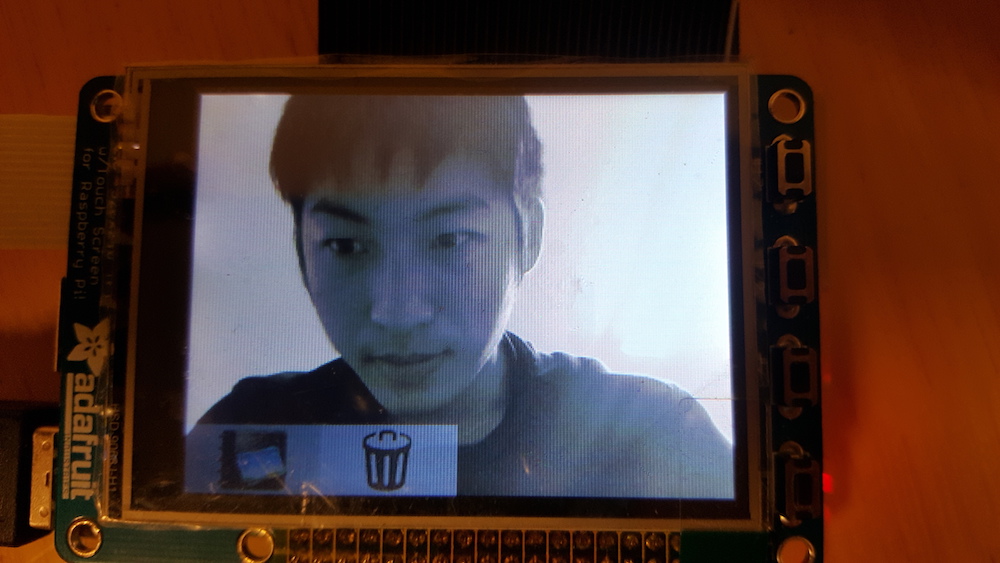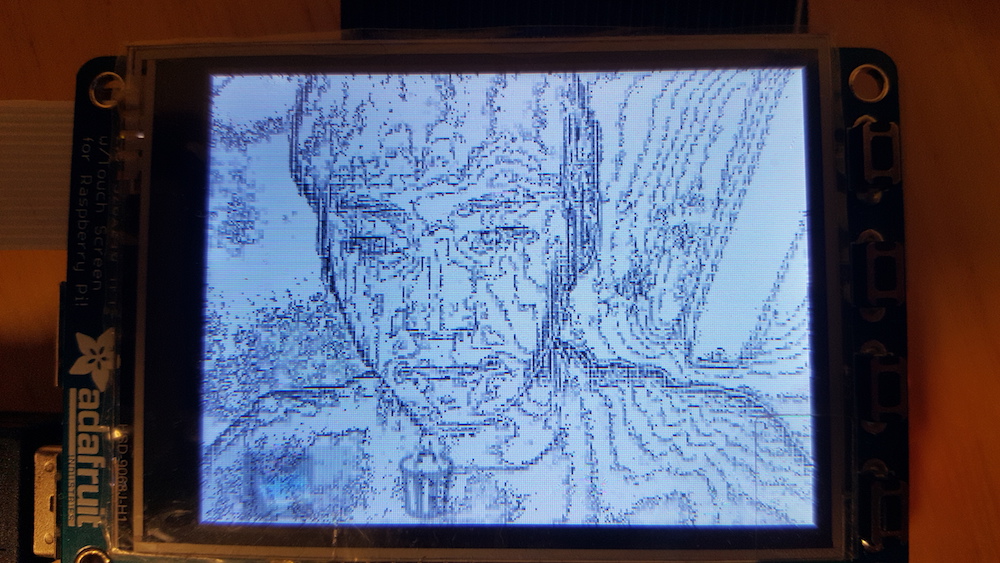Result and Conclusion
Based on the system design as mention in the previous section, the camera system can switch between each mode normally. The Vintage and Mosaic effect shown as in Fig. 1 (a) and (b), respectively, is as expected as well. However, the Mosaic processing took about 10 seconds for computing the pixel value. Hence, in the future, we would like to decrease the delay by performing this function with 4 CPU cores.

Fig. 1 (a) Vintage effect

Figure 1 (b) Mosiac effect
For the video functions, the difference between two types of video recording is obvious. Compare to the normal recording, only when detecting the object motion the system would record the video. This function will be really helpful for saving memory space. Below is the example videos taken by two different modes, where basically recording the same scenario, but the video length, when motion detection function being on, is shorter than the normal recording mode.
Recoeding video under normal mode
Recording video when turning on the motion detection
Future Work
For the future work, we want to implant the zoom in and zoom out functions while reviewing the photos. Also, the multi-core processing and preempt kernel should be helpful for enhancing the system performance.